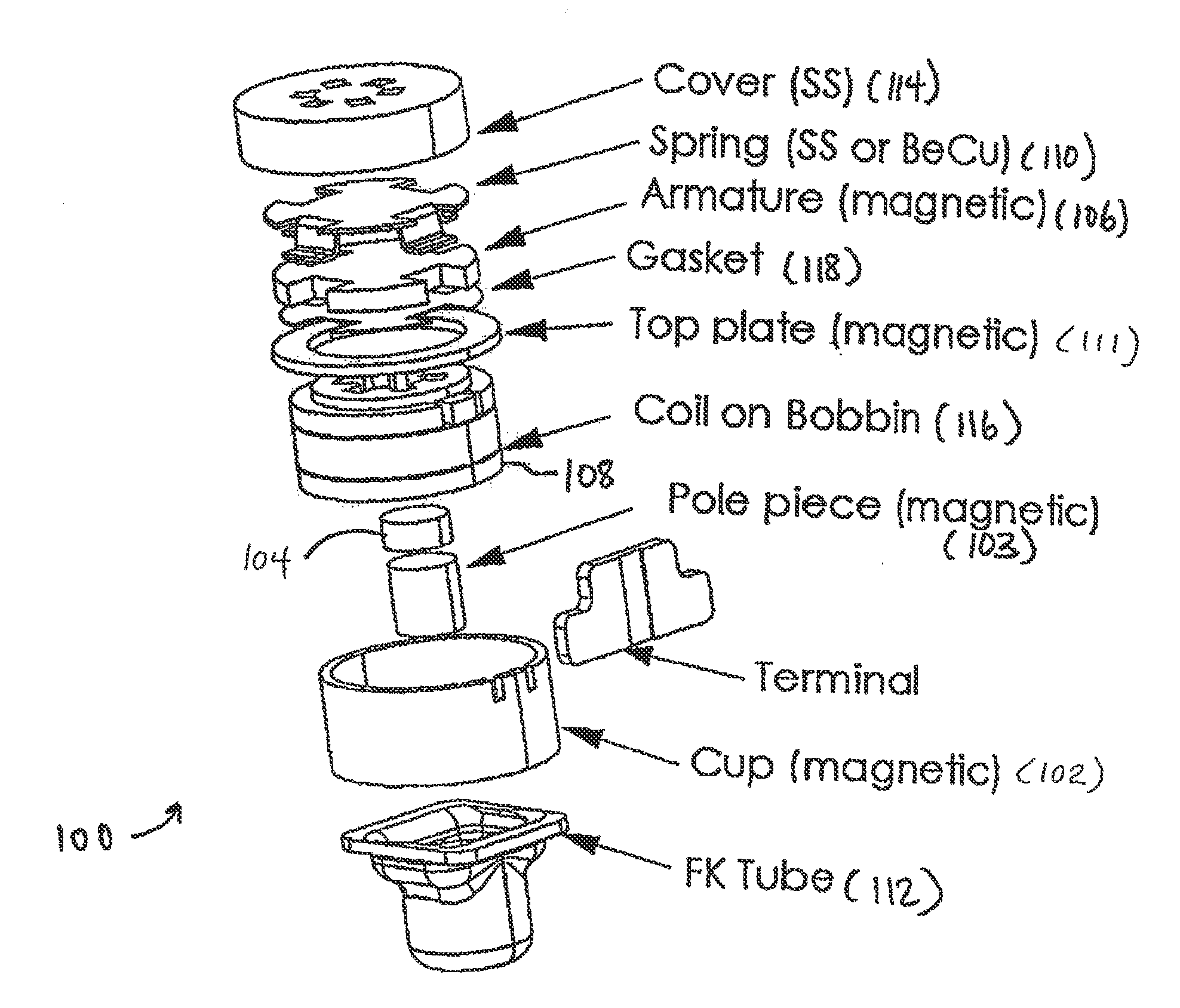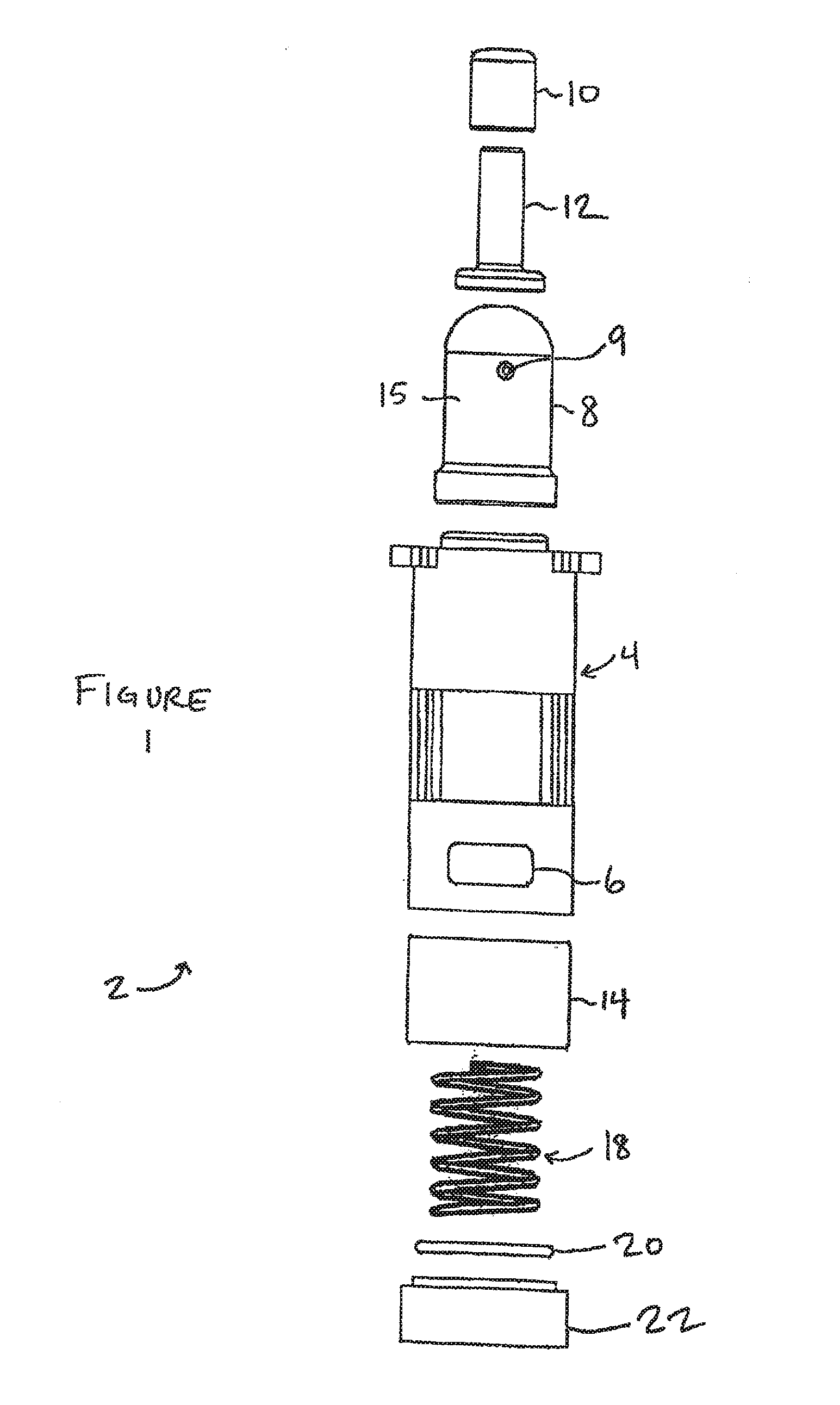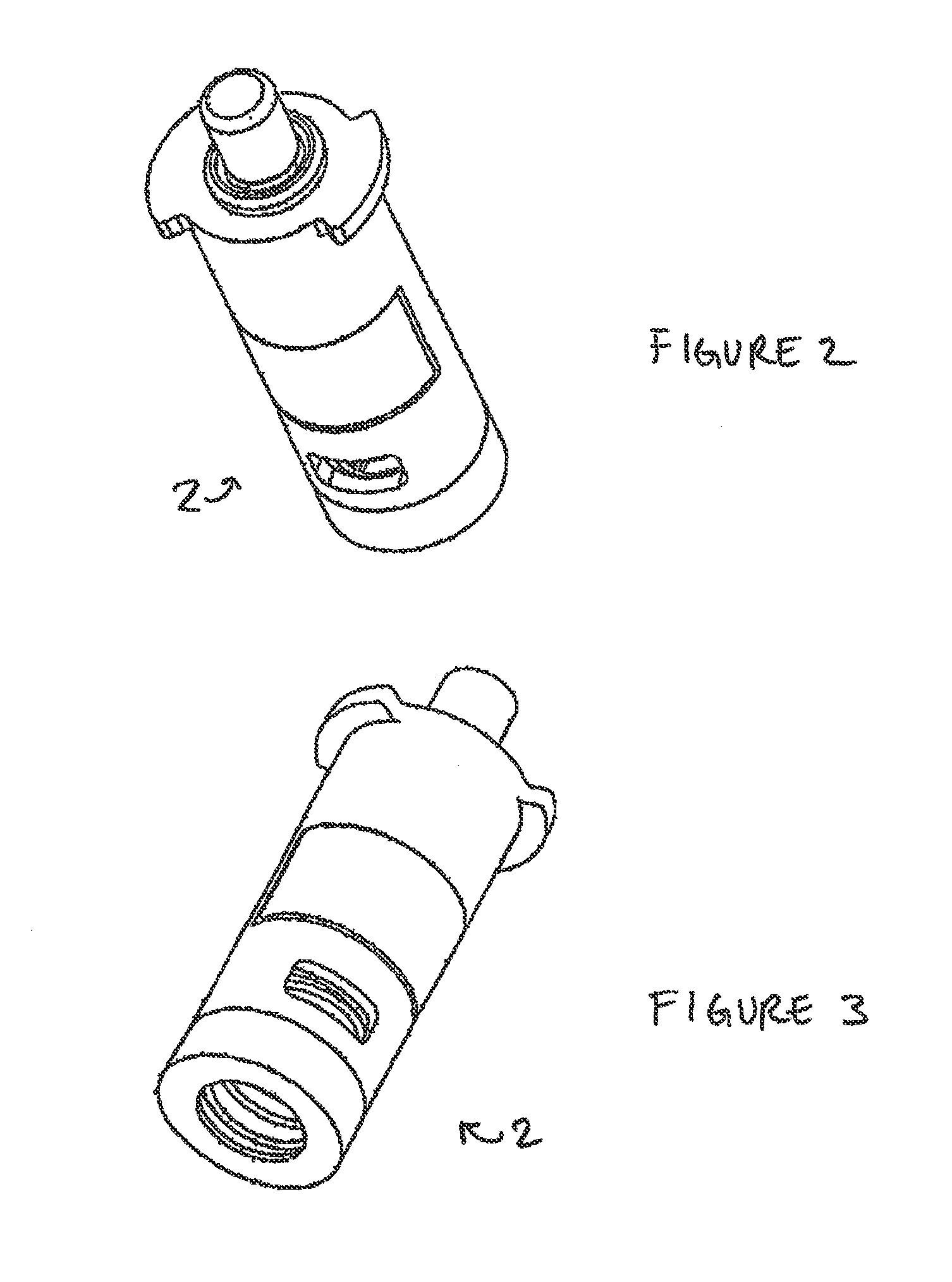Acoustic Valve Mechanisms
a valve mechanism and valve body technology, applied in the direction of valve operating means/releasing devices, mechanical devices, electrical transducers, etc., can solve the problems of reducing the reliability of the hearing instrument, difficult to achieve, and increasing the overall cost of manufacturing
- Summary
- Abstract
- Description
- Claims
- Application Information
AI Technical Summary
Benefits of technology
Problems solved by technology
Method used
Image
Examples
embodiment 1
Moving Armature
[0063]In a first embodiment, illustrated in FIGS. 14-17, the magnetic design of the motor structure is similar to a “button” receiver used in prior art hearing instruments. The magnetic assembly 100 is made up of the cup 102, pole piece 103, magnet 104, top plate 111, magnet 104 and armature 106. The cup, pole piece and top plate are made of high permeability soft magnetic material, such as 50% iron / nickel alloy. For high efficiency, the motor provides a closed magnetic circuit. The magnetic flux flows in a path from the magnet 104, through the pole piece 103, cup 102, and top plate 111. From there, the flux crosses an outer air gap (not identified in drawing) to the armature 106, travel through the armature, and cross an inner air gap to return to the magnet 104. The magnetic reluctance depends on a size of an inner air gap 113 and / or outer air gap 107 between the magnet 104 and armature 106, and the cup 102 and armature 106. The air gap 107 is best seen in FIG. 17, ...
embodiment 2
[0066]In another embodiment, shown in FIG. 18, an assembly 200 utilizes a balanced armature receiver 202 as the valve. The receiver 202 has a coil 203, an armature 205, magnets 207, and a yoke structure 209 for transferring magnetic flux which encompasses the magnets 207. The receiver 202 would be modified from traditional designs to enable bistable operation. This may be done via increasing the strength of the magnets 207, but may also involve reducing the mechanical stiffness. The receiver 202 has an extra opening 208, which is connected to the opening 210 in the rear volume of the microphone 212. The receiver 202 is designed so that in one position the receiver diaphragm or paddle 220 closes the air path between inlet and outlet. One method to do this is to add a gasket ring 218 inside the cover of the receiver that would touch the paddle 220. Another method would be to have the gasket ring 218 seal against the soft film annulus that surrounds the paddle 220. This use of a paddle...
embodiment 3
Movement of Ferrofluid
[0067]FIGS. 19 and 20 show the motor portion of a moving fluid valve assembly 300. The motor assembly 300 is constructed of two magnets 302 and 3 soft magnetic pole pieces 304. The field from the magnets 302 holds the fluid 306 in the gap 308 between two adjacent pole pieces 304. Magnetic flux from the magnets 302 flows through the pole pieces 304, creating a field in the small gap between tips 307 of the pole pieces 304.
[0068]When a pulse of current is applied to the coil 310, the field in one of the gaps 308 will be temporarily reduced, while the field in the opposing gap will be strengthened. A drop of ferrofluid 306 is attracted to the gaps, and is used to form a seal across the magnetic gap. When current flows through the coil 310, the magnetic field weakens in one gap, and strengthens in the other. The fluid 312 will move to the gap with the strongest field. When the current is removed, the fluid 306 will remain in place. Not shown is a housing. This hous...
PUM
 Login to View More
Login to View More Abstract
Description
Claims
Application Information
 Login to View More
Login to View More - R&D
- Intellectual Property
- Life Sciences
- Materials
- Tech Scout
- Unparalleled Data Quality
- Higher Quality Content
- 60% Fewer Hallucinations
Browse by: Latest US Patents, China's latest patents, Technical Efficacy Thesaurus, Application Domain, Technology Topic, Popular Technical Reports.
© 2025 PatSnap. All rights reserved.Legal|Privacy policy|Modern Slavery Act Transparency Statement|Sitemap|About US| Contact US: help@patsnap.com



